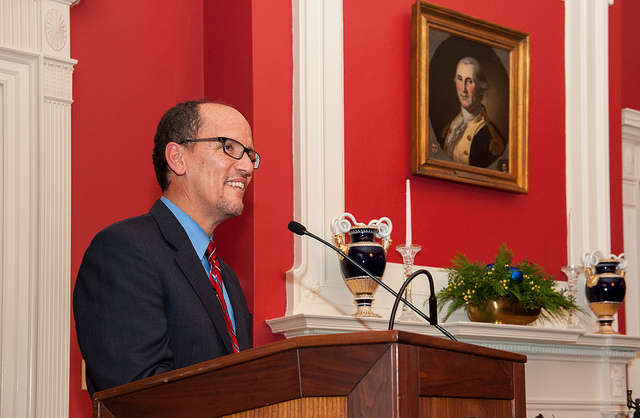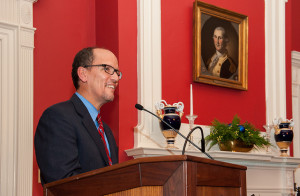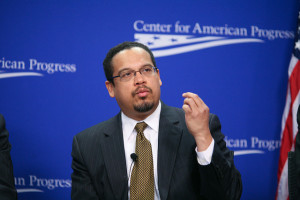After the Vote-A Unified DNC
 Tom Perez, now DNC chair, addresses a crowd.
https://flic.kr/p/hQoSWx
Tom Perez, now DNC chair, addresses a crowd.
https://flic.kr/p/hQoSWx
From Saturday’s Democratic National Committee leadership vote, my favourite chair candidate, Mayor Pete Buttigieg, emerged not as a victor in his race, but as a rising Democratic star with higher stock. The main two candidates, Tom Perez and Keith Ellison did not gain a majority on the first ballot, moving to the second round of voting, where Perez won 235 delegates to Ellison’s 200, securing the chair position.

https://flic.kr/p/hQoSWx
As I noted in my last article, Perez represents the Democratic Party’s “Hillary” wing while Ellison represents the party’s “Bernie” wing. This seemingly factional battle for the highest position in the DNC left many observers, myself included, concerned about party unity. Would the second place finisher go down with dignity? Would donors with one wing pull their funds if the other won this race? How heated would the process become?
Thankfully, these questions were answered in a fashion that should console and energize Democrats across the country. Instead of letting Ellison and the party’s more activist progressive wing fall flat, Perez handed the anti-establishment faction a major victory. Perez suspended the rules to name Keith Ellison his deputy chair. Some raised concerns about whether or not this was a symbolic more or a substantive move. However, in this role, Perez has delegated to Ellison control over facets of party politics like grassroots organizing, where Ellison and Sanders shone. By empowering progressive Democrats, Tom Perez has already made a commitment to party unity and has begun to move beyond Debbie Wasserman Schultz’s tepid technocracy.

https://flic.kr/p/9nnVdh
Establishment Democrats, who I am still not very fond of, are now recognizing that they cannot shout over or shut down progressives. They must instead seek to collaborate with them in building a stronger party, one devoted to winning at every level. Each wing of the party has different strengths. For example, Tom Perez did not alienate large scale fundraising targets like Keith Ellison did. While it is regrettable that Democrats depend on big-money donors, fishing for massive donations remains a part of the extant campaign finance system. However, Perez and the establishment are generally weaker at mobilizing young voters than the more exciting and more ideological progressive wing. By playing to the strengths of each side, the deputy chair arrangement is a hopeful harbinger of change in the Democratic Party. This welcome change is a winning change, and while Perez is far from perfect, I am glad to see the DNC enter this new stage of leadership and hopefully victory.
